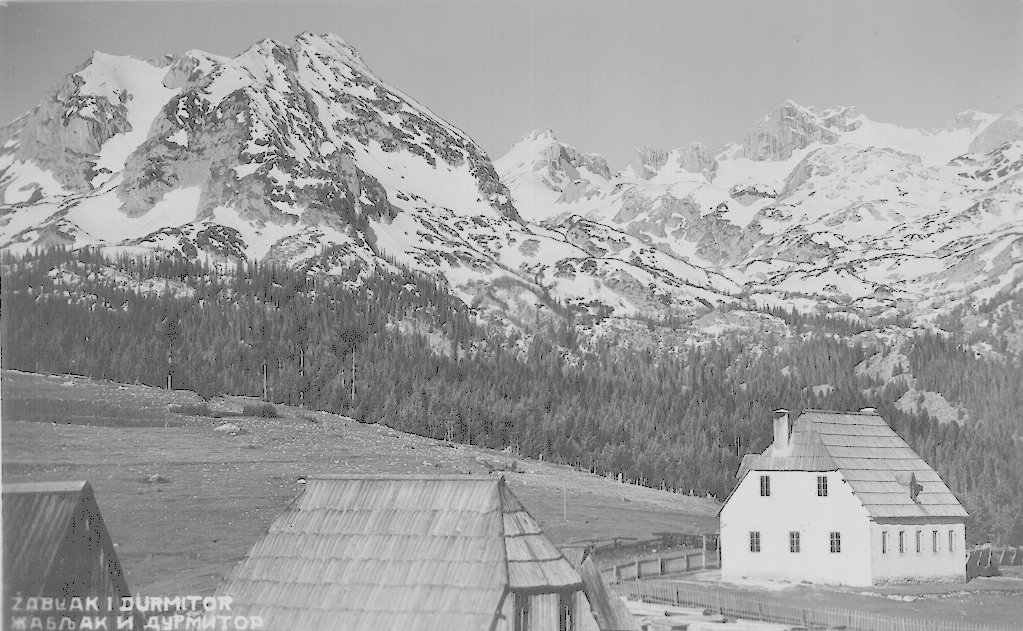The area of Durmitor, a mountainous territory rich in history and breathtaking nature, stretches between two, perhaps the most beautiful Montenegrin rivers, Tara and Piva, on one side, all the way to the western branches of the vast Sinjajevina to Scepan polje, on the other. Although high and sometimes inaccessible, this territory remembers stormy events and numerous tribes and peoples who visited it. The first settlements were created by the Illyrians, more precisely their tribe the Autariats. Suppressed by the Celts, they left this area already in the 4th century BC. With the arrival of the Romans, the area of Durmitor became part of their territory until the 7th century, when it was inhabited by Slavic tribes. The Romani population, which they found, they called the Vlachs. Vlach, as an ethnographic name, later acquired the meaning of a person engaged in animal husbandry, regardless of nationality. Since early times, therefore, cattle breeding was the primary activity of the population, which in many ways relied on favorable geographical circumstances, especially a large number of high-quality pastures.
When it comes to the etymology of the river Durmitor, there are several opinions. For some, the Latin word dormire, which means to sleep, is the real root of this word, for others it is Celtic drummer which means the water from the mountain is a real spring.
When the first Slavic states were created in the Balkans, this area became part of the early feudal Serbian state from the 9th century, which was governed by the prefect Vlastimir. Administratively, it was divided into zupes, and it encompassed a wide territory. When the state was formed in Zeta in the first half of the 11th century. the Durmitor area became part of it. Somewhat later, this area was dominated by the old state of Raska, which was ruled by Vukan, Nemanja and others, for a long time fighting with Byzantium.
The arrival of the Turks also meant a new struggle for the population of the Durmitor region. From 1482 to 1857, the duration of Turkish rule in the Balkans, the people of Durmitor continuously resisted the great empire, regardless of the ferocious campaigns undertaken by the Turks. The people of this region stood out for their bravery in several battles when the more numerous and powerful Turkish army suffered losses of several thousand people. In 1862, a great victory was won in Saranci.
This region is particularly interesting because of an event from Montenegrin history. In 1840, Smailaga Cengic was killed in Mljeticko. In the long-term struggle, the population of this region suffered a great sacrifice, but thanks to the persistent struggle and freedom tradition, the Turks never succeeded in settling their subjects and establishing their rule in this area. During the centuries of existence, tribal power and real tribal life were built in this area. In the beginning, the region was divided into Drobnjak and Piva, and later on the territory of Drobnjak, other tribes were formed, such as Uskok, Jezera and Saranaci. The center of these tribes was Zabljak. 1878 the area of Durmitor became part of Montenegro, becoming part of the administratively recognized state.
Several churches and monasteries have played a great cultural and historical role in this region - Piva Monastery from 1573, Bijela Monastery from the 18th century, Dobrilovina Monastery, which according to some reports dates from the Nemanjica era, as well as the Podmalinsko and Dovlica monasteries. The church in Krs, as well as the one in Zabljak, were built in honor of great victories over the Turkish army. The Turks burned the monasteries on several occasions, but the people of this region restored and preserved them, so the Piva Monastery is one of the most important buildings in this area in terms of preserved cultural and historical values.
In the period between 1857 and 1878. this area was a border territory, so it was still exposed to minor conflicts with Turkish military units. Somewhat later, it was connected with Pljevlje and Bijeli Polje, thus creating a solid libertarian territory in the north of Montenegro. Even during the First World War, the Durmitor area was exposed to the attacks of the occupiers, but resistance was offered during the entire duration of the war, most often through Komit groups and detachments.
In the interwar period, the area of Durmitor was part of the Šavnica region, with the municipalities of Planino - Pivska, Zulu - Pivska, then Jezerska, which included Žabljak itself, Drobnjačka, with Šavnik, and Uskočka and Saranka. In this period, cattle breeding was dominant in this area, and work was done to a lesser extent on the exploitation of the forests of Durmitor. Two smaller sawmills and several schools were opened in that period, and of particular importance was the opening of the road Niksic - Savnik - Zabljak - Pljevlja. With the formation of the Kingdom of Serbs, Croats and Slovenes, an active political and party life was established in these areas for the first time, dominated by the Agricultural and Democratic Party and, on the eve of World War II, an extremely important communist party for this region. The importance of the communist party for this region was great. Despite the major bans and the government's influence on reducing the party's activities, the communist party, thanks to numerous students and intellectuals, encouraged the people of Durmitor and Zabljak to resist - namely, the majority of the people stood up and prevented the proposal to name Zabljak Alexander's Town, after King Alexander such an attempt. The people of this region condemned Yugoslavia's accession to the tripartite pact, showing that they value freedom above all else. At that time, Zabljak was the site of large demonstrations.
Zabljak and Durmitor with their people made the greatest contribution and sacrifice in World War II. In just seven days after the start of the uprising against the fascists, Zabljak was liberated, and the people started forming the organs of the uprising government. The contribution of the Durmitor national liberation partisan movement remained inscribed in golden letters when it comes to anti-fascist activity in the Balkans. The Republic of Durmitor, as this area was called, survived many attacks, and for a time was also a stronghold of the Great Staff headed by Josip Broz Tito. This small area during the war had over two and a half thousand victims, and produced 15 national heroes. After the Second World War, Zabljak developed from a small town into a tourist town. Today, it is becoming the leading winter center in the region, which uses the beauty of the nature in which it is located in the right way to affirm itself as a vacation spot, as well as the country in which it is located.



